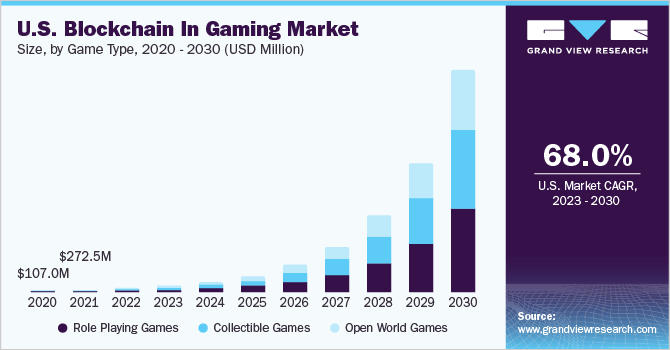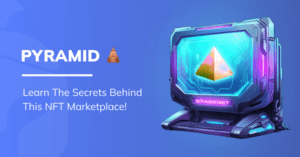What is Blockchain Gaming?

Blockchain gaming is an exciting evolution in the world of video games, combining the innovation of decentralized blockchain technology with interactive entertainment. At its core, blockchain gaming allows players to own, trade, and even earn money from in-game assets through cryptocurrencies and non-fungible tokens (NFTs). This new frontier is changing the way we perceive ownership in virtual worlds and offering players a more immersive experience where they truly control the digital assets they acquire.
In traditional gaming, players can spend hundreds of hours collecting rare items, skins, or characters. However, these assets typically belong to the game’s publisher and cannot be transferred or traded beyond the platform. Blockchain gaming turns this concept on its head by introducing verifiable ownership, powered by the blockchain, which allows players to truly own their in-game assets. This ownership can extend beyond a single game or platform, opening the doors to new economic possibilities in the digital realm.
How Does Blockchain Work in Gaming?
The blockchain is a decentralized, transparent ledger that records transactions across a network of computers. It serves as the backbone of cryptocurrencies like Bitcoin and Ethereum, but in gaming, it facilitates ownership and transparency in virtual economies. The key advantage of blockchain in gaming is its ability to give players control over their in-game assets through tokenization.
In blockchain gaming, items like weapons, skins, or characters are often represented as NFTs. These NFTs are stored on a blockchain, making them unique, verifiable, and tradable on open markets. This means that players can transfer assets between games or sell them for real-world value, something previously impossible in traditional gaming systems.
Another crucial feature of blockchain in gaming is smart contracts. These are self-executing contracts with predefined rules encoded on the blockchain. For instance, smart contracts can manage transactions like buying or selling an in-game asset, ensuring a transparent and trustless process.
Starknet, one of the most innovative blockchain networks, is making strides in improving scalability and transaction speed for games that rely on smart contracts. One key advantage of Starknet is its extremely low transaction costs, often as low as $0.001 per transaction. This makes micro-transactions possible, such as saving game progress every few minutes or purchasing in-game assets at minimal cost.
Starknet also offers native account abstraction, enabling wallets like Braavos to provide a seamless experience for gamers. This technology opens the door for advanced features such as Session Keys, which could allow players to pre-approve transactions for a set period (e.g., 30 minutes) or up to a specific amount (e.g., $20). With such features, players wouldn’t have to deal with constant pop-up windows for transaction confirmations, ensuring that gaming sessions remain uninterrupted and smooth. As the ecosystem evolves, innovations like these are expected to enhance the gaming experience on Starknet.
Braavos enhances this experience further with security and usability features like the 2FA Hardware Signer and 3FA Multi-Signer, making the gaming ecosystem more user-friendly and secure.
Is Blockchain Gaming Legit?
Yes, blockchain gaming is a legitimate sector within the larger gaming and cryptocurrency industries. The rise of games like Axie Infinity, Gods Unchained, Loot Survivor, and Influence has brought blockchain gaming to the mainstream. These games allow players to collect, trade, and even sell in-game assets for cryptocurrency, which can then be exchanged for fiat currency.
However, like all emerging technologies, blockchain gaming faces skepticism. Critics often point to the speculative nature of some blockchain-based games, where earning money can overshadow the gameplay itself. The volatile nature of cryptocurrencies also raises concerns about the stability and long-term value of in-game assets.
Despite these concerns, the blockchain gaming industry is growing rapidly. According to a report by DappRadar, blockchain games accounted for over 50% of blockchain activity in 2022, with over 1 million daily active users across various platforms. As the technology matures and more developers build sophisticated gaming experiences, blockchain gaming is set to become a more stable and integral part of the gaming landscape.

What is an Example of a Blockchain Game?
One of the most famous examples of a blockchain game is Axie Infinity. In this game, players collect creatures called Axies, which are NFTs stored on the Ethereum blockchain. Players can breed, trade, and battle their Axies, earning the in-game currency, Smooth Love Potion (SLP), which can be traded for real money on cryptocurrency exchanges.
At its peak, Axie Infinity boasted over 2.7 million daily active players. Players in countries like the Philippines were able to earn between $200 and $1,000 per month during the game’s most successful period in 2021. The success of Axie Infinity inspired many other blockchain-based games to adopt similar models, making it a leading example of how blockchain technology can be used to enhance gaming experiences.

In addition to Axie Infinity, the blockchain gaming ecosystem includes notable projects on the Starknet network, such as:
Loot Survivor
Loot Survivor is a survival strategy game set in a post-apocalyptic world where players compete against each other to gather resources and survive. What’s unique about Loot Survivor is that players don’t need to own NFTs to participate, making it accessible to a broader audience. The game focuses on strategic resource management and survival mechanics rather than NFT ownership, though NFTs can still play a role in trading items and assets within the Starknet ecosystem.

Influence
Influence is a space strategy MMO built on Starknet where players control asteroids, establish colonies, and explore a massive asteroid belt. Players can own in-game assets, such as starships and land, and these assets are verifiable and tradable NFTs. With its expansive universe and detailed economy, Influence pushes the boundaries of what is possible in blockchain gaming, utilizing Starknet’s scalability to enable a seamless and engaging experience.

Can You Make Money from Blockchain Games?
Yes, one of the key attractions of blockchain gaming is the potential to earn real money. Players can earn in-game rewards, which are often cryptocurrency tokens or NFTs, and these can be sold or traded on open markets for real-world value. The P2E model has revolutionized the gaming economy, allowing players to earn money by simply playing games.
In games like Axie Infinity, Loot Survivor, and Influence, players can earn tokens through gameplay or by trading NFTs. While the potential to make money exists, it’s essential to consider the risks involved. The value of in-game assets and cryptocurrencies can fluctuate dramatically, meaning that players could lose money if the market drops. In the case of Axie Infinity, for example, the value of SLP plummeted in 2022, significantly reducing the earning potential for players.
What Are the Risks of Blockchain Gaming?
Despite its many advantages, blockchain gaming comes with risks:
- Volatility: The value of cryptocurrencies and NFTs can change dramatically, which means in-game assets can lose value quickly.
- Security: While blockchain itself is highly secure, hacks and exploits on platforms or marketplaces where NFTs are traded can result in asset loss.
- Regulatory Concerns: As blockchain games often involve cryptocurrency transactions, they could be subject to regulatory scrutiny in certain jurisdictions.
- Speculation: Some blockchain games have been criticized for prioritizing financial gains over gameplay, creating an environment where speculation takes precedence over user experience.
Understanding these risks is crucial for anyone looking to get involved in blockchain gaming.
Which Blockchain is Best for Gaming?
Several blockchains are competing for dominance in the gaming sector, but a few stand out:
- Ethereum: As the most established blockchain with widespread adoption, Ethereum is home to many blockchain games. However, its scalability issues and high gas fees are drawbacks.
- Starknet: A layer-2 scaling solution for Ethereum, Starknet offers much-needed scalability and cost-efficiency, making it ideal for blockchain gaming. Its focus on zero-knowledge rollups allows for faster and cheaper transactions without compromising security. Starknet-based games like Loot Survivor and Influence are already demonstrating the network’s potential in gaming.
- Solana: Known for its high speed and low transaction costs, Solana has become a popular choice for gaming developers looking to avoid the bottlenecks and high fees associated with Ethereum.
How Much is Blockchain Gaming Worth?
The blockchain gaming industry is growing rapidly. In 2022, the global blockchain gaming market was valued at around $4.6 billion, and it’s expected to reach $65.7 billion by 2027 according to Immutable. This growth is driven by the increasing adoption of NFTs, the P2E model, and the continued integration of blockchain technology into mainstream gaming.
Is Blockchain the Future of Gaming?
Blockchain technology has the potential to revolutionize the gaming industry by introducing new models for ownership, reward systems, and economic interaction. The ability to create and trade NFTs, as well as the transparency and security offered by blockchain, could transform how gamers interact with virtual worlds.
However, while the potential is significant, it’s essential to recognize that blockchain gaming is still in its infancy. There are technical and financial challenges to overcome before it can become a dominant force in the gaming industry. Scalability, for instance, remains a significant issue. High transaction fees and slow processing times on some blockchains can hinder gameplay experiences. This is where layer-2 solutions like Starknet come into play, offering faster and cheaper transactions, which are crucial for real-time gaming.
As blockchain technology and gaming ecosystems like Starknet continue to evolve, blockchain gaming holds great promise for the future. But its success will depend on addressing these challenges and ensuring that gameplay, not speculation, remains at the heart of the experience.
Try Blockchain Gaming with Braavos
To experience the future of blockchain gaming, you can start by trying Loot Survivor and Influence on Starknet. Simply download the Braavos wallet and connect to these games via our dapp gallery. With Braavos, you can explore a seamless and secure gaming experience, leveraging the power of Starknet’s native account abstraction. Download today and take your first steps into blockchain gaming!


